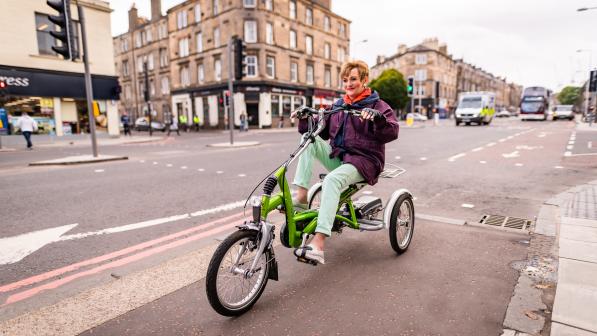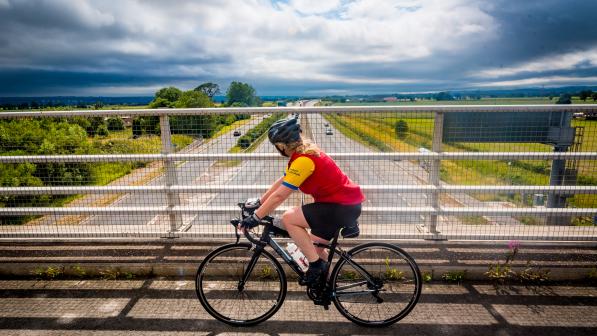The Cycling UK view: Scotland's transport system needs radical change

It’s clear that the climate emergency requires that we urgently transform our transport system. Cycling is a zero carbon and healthy way to travel so it must be at the heart of Scotland's new National Transport Strategy (NTS2).
Only radical change in policy and strategic direction in the NTS2 will enable people to get out of their cars, and instead cycle, walk or use public transport.
The Scottish Government now has the task of reading and analysing all the responses to the NTS2 consultation and improving their strategy, which they aim to have completed by the end of the year.
We have used the consultation to call for actions which will encourage more people to ride a bike regularly and enjoy the benefits it brings.
Only radical change in policy and strategic direction will enable people to get out of their cars, and instead cycle, walk or use public transport.
Jim Densham, Cycling UK's Campaigns and Policy Manager for Scotland
More than 600 people submitted their own responses to the consultation via an online form that we set up to help people have their say on cycling in the strategy.
We had been concerned that the long and detailed document was difficult for most people to digest, so our easy-to-use form helped hundreds to say what practical actions they want in a Strategy Action Plan.
Thank you to everyone who used our form to send a personalised response to the consultation.
An analysis of these responses shows that twice as many people responded from urban areas than rural areas of Scotland. Just over half of respondents (56%) said that what stops them cycling or cycling more is that they feel the roads are dangerous. The next most popular reasons were not enough cycle lanes where they live (19%), and speeding drivers (13%).
We asked people for the top two things that would encourage them to cycle more. Of the responses given, 55% called for segregated cycle lanes along arterial routes into towns and cities, 14% selected better linked cycle lanes and networks, and 14% identified a larger, better linked National Cycle Network with more sections off the road, as a key action.
More space for bikes on trains (9%) and buses (5%) were chosen less frequently, but clearly important for those who selected these options.
At Cycling UK, our work on this strategy doesn't end here. We will keep talking to the Scottish Government to represent people who ride bikes, and those who can be supported to cycle in the future, to ensure the strategy creates a cycle-friendly environment in Scotland.






